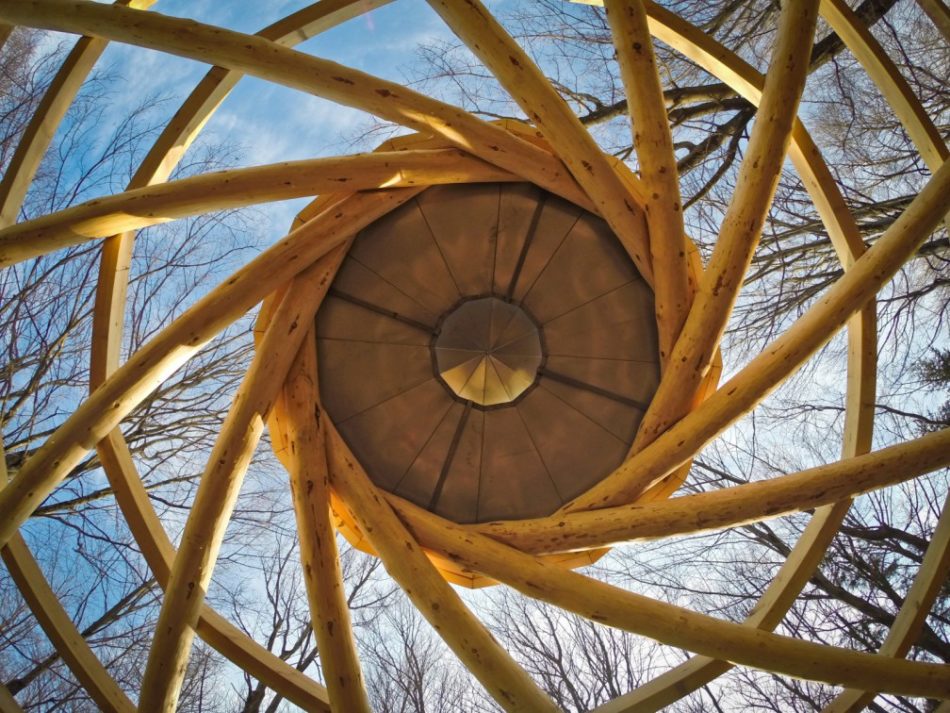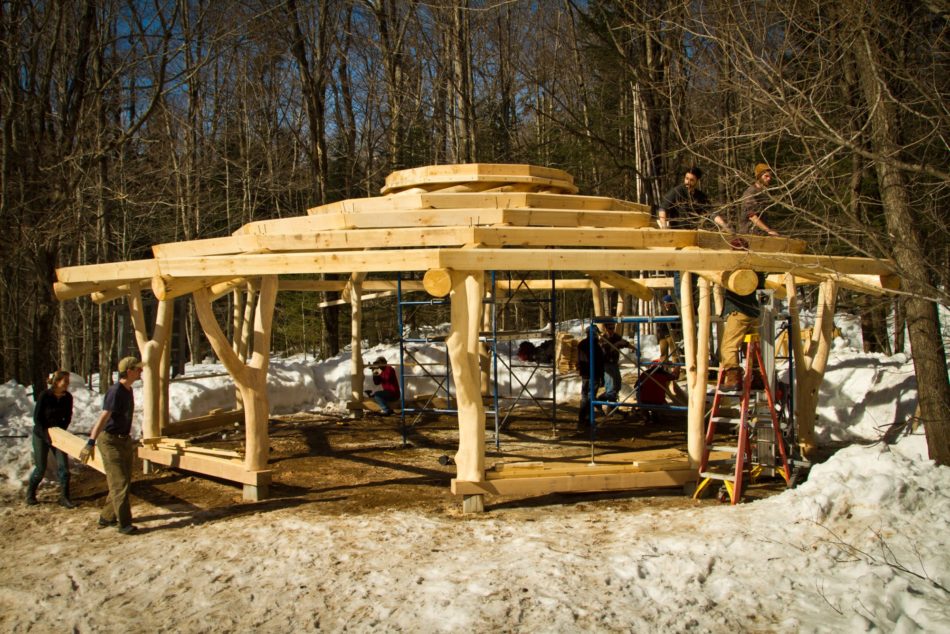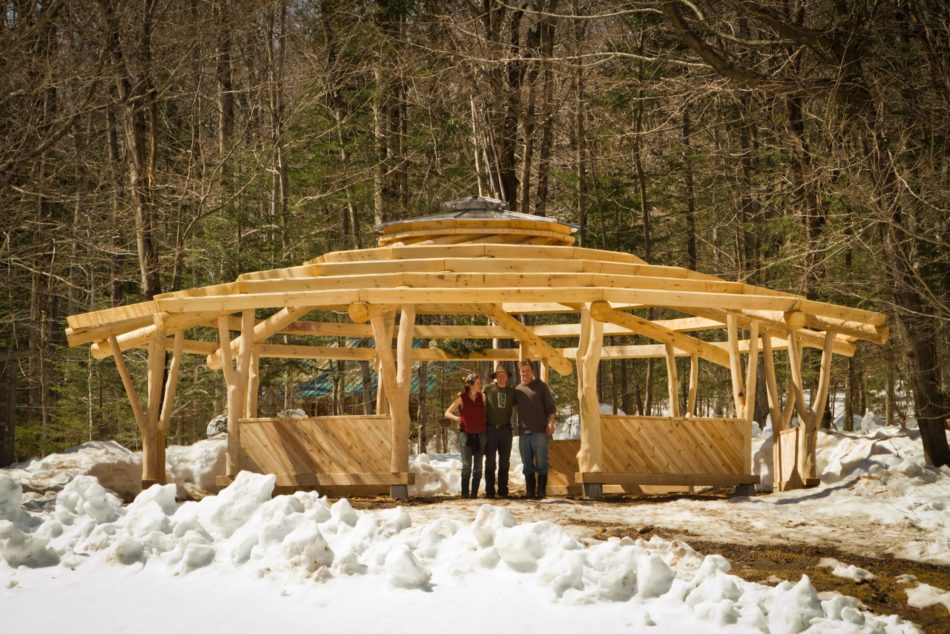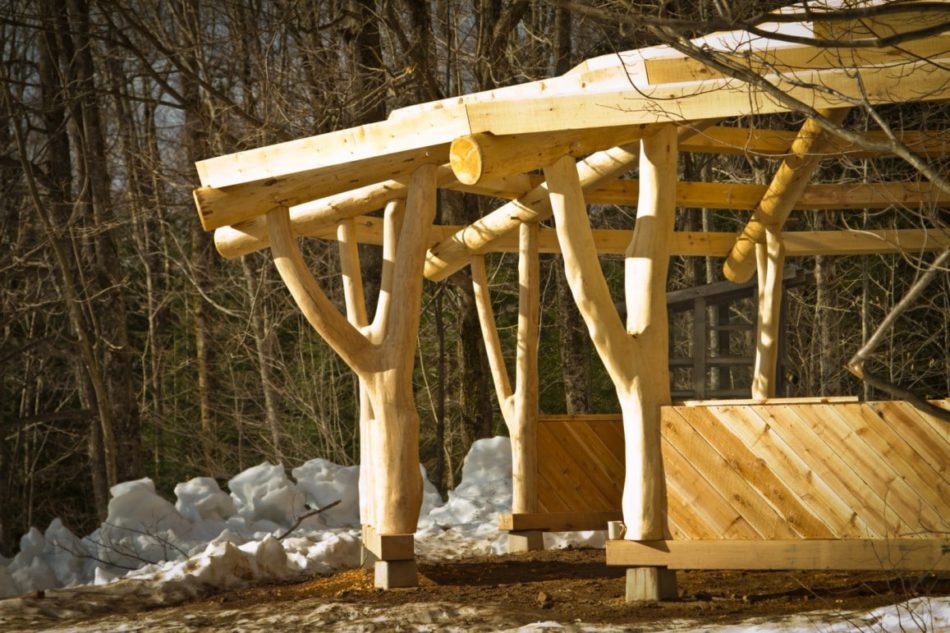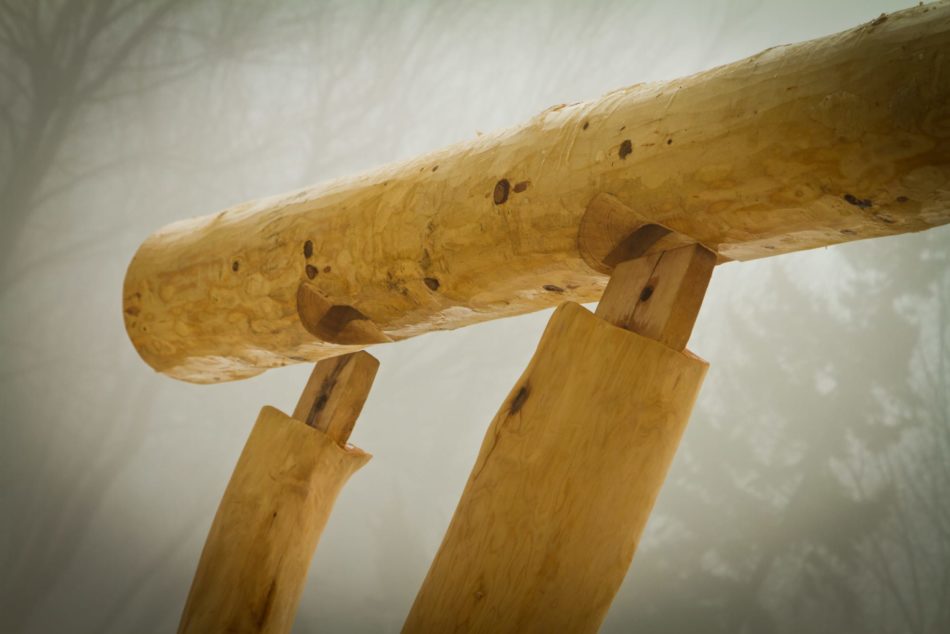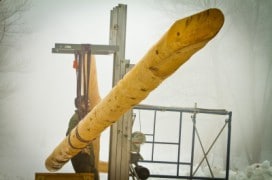Only now, looking back at captivating images photographer Daniel Girard snapped throughout raising week, does this author have the mental space to appreciate this building. Preparing for the raising was so riddled with reckoning, scheming, and making lists that reflecting on how unique the structure would be was not the first priority. How do you lift a 600 pound cylinder into the air such that it can be nudged around to a precise location? How do we make sure the pre-cast pins in the foundation are really where they should be, relative to one another and to the center of the building? How do we make sure that the sill we set over those pins is parallel to the sill across from it, the correct distance from the center of the building, and the right distance concentrically from it’s neighbors? What’s the best way to hold up the building during assembly, before the final rafter is set and locks the reciprocating roof in place? Will that last rafter slip into place or will we need to somehow lift the entire roof load (600 pounds x 11 other rafters) to make room for it?
All these conundrums and more were answered during a good old fashioned week of hefting beams and raising timbers. The adventurous skid ride into the site became our daily commute, the volunteers there to help lift timbers became quick comrades, and before we knew it, twelve forks were standing, and twelve rafters were in place. A reciprocal frame is defined, by architect Olga Popovic Larsen, to be a three-dimensional grillage structure mainly used as a roof structure, consisting of mutually supporting sloping beams place in a closed circuit. This had been naught but a bit of jargon until that mutual support bit kicked (or rather, snuck) in: As we knocked the far tips of the rafters around so that their ends met a pre-cut ring of purlins, we realized that the temporary supports ‘holding up’ some of the rafters at mid-span during raising had actually been lifted off the ground. Not only was this three-dimensional grillage structure carrying itself, it was holding up it’s own temporary supports! Standing on top of a roof that seemed to float, I thought “and now, I believe.”
The twenty four trees comprising the main frame of this building will stand elegantly for a long, long time.
The building is topped with a stainless steel cupola built by tradesmen local to Montpelier, VT, and the cedar shear walls were site built.
